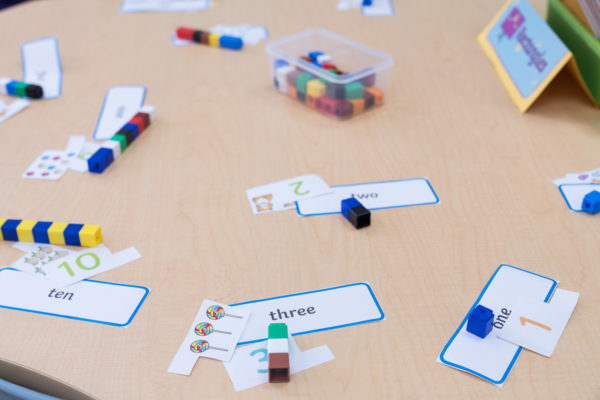
If we aim to use two languages properly in our bilingual maths lessons, first it is necessary to fully understanding the advantages of bilingualism itself. Thus, I want to share the main points of a recent TED talk[1] “The Benefits of a Bilingual Brain” with you. (You can access the full presentation here: https://www.ted.com/talks/mia_nacamulli_the_benefits_of_a_bilingual_brain) According to the video, bilingual communication and thinking can activate a particular area of our brain (the dorsolateral prefrontal cortex to be precise), which strengthens our focus, flexibility and reasoning capabilities. Compared to a monolingual system, bilingual or multilingual systems enable our brain to switch between languages in line with different occasions and contexts. This switching of languages and thinking modes is a brilliant method of ‘brain training’. At Hiba, we do not simply teach lessons in Chinese and English separately. Instead, subjects, such as maths, science, history and music, are all taught by our bilingual teachers or in both languages, which provides abundant opportunities for pupils to improve their abilitiy to switch languages and their thinking mode. Although training a pupil’s bilingual abilities may in some cases adversely affect their learning efficiency at the beginning of the process, this particular switching function of brain will quickly become more agile after being used repeatedly. It is the same principle as gaining muscular strength though frequent physical exercise.

The following chart shows the famous Stroop Effect experiment.
Unlike group one, the colours of the words in group two are not matched with the colours they actually refer to. Most people are more likely to make mistakes when they read out the colours in group two. However, research finds[2] that bilingual learners generally exhibit higher accuracy than monolingual learners when completing this test. This is because they can filter out irrelevant information rapidly because of their ability to better control and focus their mind. Moreover, bilingual learners not only have the advantages of using two languages to listen, speak, read and write, but also possess greater multitasking abilities.

This simple test makes us reflect on how bilingual teaching can play a larger role in our maths lessons. Is our only goal to improve pupils’ English ability and prepare them for the international standardised exams by teaching maths in English? Of course not, bilingual teaching has much broader scope than this. As it mentioned above, bilingual training creates excellent opportunities for them to practise switching between languages and thinking modes, which will ultimately train their brains to be more agile.
This kind of training does not rely on an equal allocation of time spent using both languages in maths lessons, rather, it depends on teaching pupils how to successfully utilise each language in different class activities. For example, pupils may first read questions in English and then try to understand the questions’ full meaning before summarising and expressing the relevant mathematic concepts in Chinese. In this activity, although pupils and teachers do not communicate with each other in English, pupils need to grasp the Chinese meaning of English-based questions while understanding the underlying mathematic concepts. This is a practical process of switching and comparing different thinking patterns.

Some people may wonder whether it is more beneficial for pupils to express their findings in English after their Chinese narration. This depends on difficulty of the mathematical concepts involved and the ability levels of the pupils. The ultimate goal of bilingual maths teaching lies in brain training rather than practising languages. It is unnecessary for pupils to express some extremely simple or complex concepts in English because excessive English utilisation may lower the desired effect of the brain training and force them to focus on the correctness of their grammar. This may help build a sound English learning environment to improve their English proficiency, but it is not conducive to realising our overall teaching objectives, and may even cause adverse effects. Thus, solely using English in our classes is not beneficial. On the contrary, effective bilingual classes enable pupils to use language tools in an appropriate manner which not only strengthens their understanding of mathematic concepts but also trains the overall agility of their minds.

References: [1] The benefits of a bilingual brain - Mia Nacamulli. Retrieved from https://ed.ted.com/lessons/how-speaking-multiple-languages-benefits-the-brain-mia-nacamulli [2] Bialystok, E., Craik, F. I., & Luk, G. (2008). Lexical access in bilinguals: Effects of vocabulary size and executive control. Journal of Neurolinguistics, 21(6), 522-538. doi:10.1016/j.jneuroling.2007.07.001